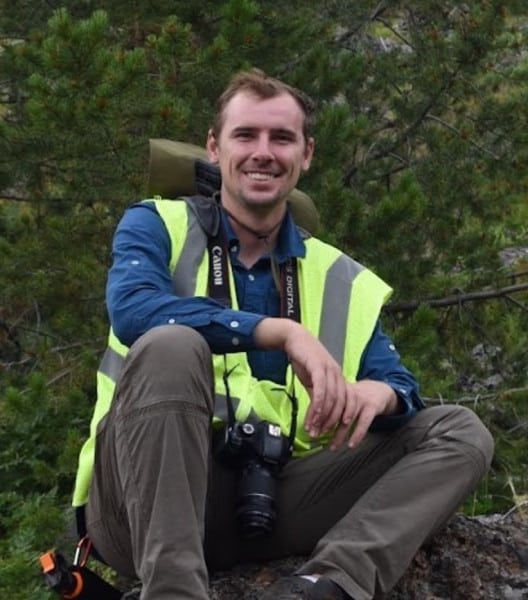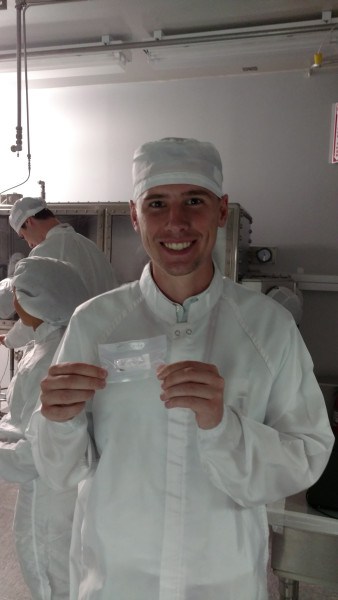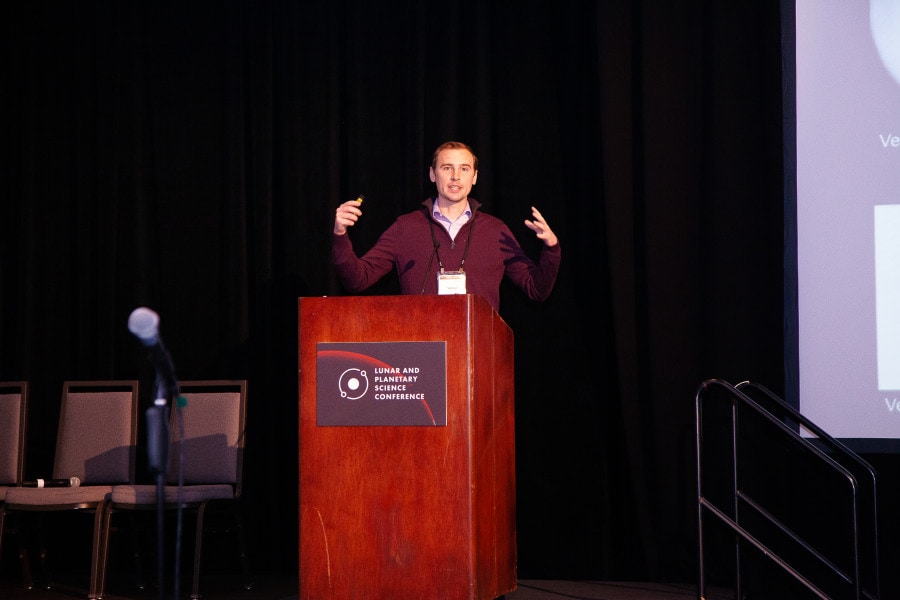
Samuel Courville
Research Associate
Professional History
Samuel is captivated by the history of our solar system and how humans, as well as life as we know it, intertwine within it. Sam’s planetary science career, and his relationship with the Planetary Science Institute, began with NASA’s Planetary Geology and Geophysics Undergraduate Research Program, where he was placed as a summer intern with Dr. Nathaniel Putzig studying daily temperature changes on Martian sand dunes. Inspired by the amazing data and images from NASA’s Mars missions, Sam completed BS/MS degrees in Geophysics at the Colorado School of Mines, intent on pursuing a career involved in NASA planetary science missions. Along the way, Sam’s research focused on two things: geophysical data analysis, and spacecraft geophysical instrument design. On the data analysis side, he collaborated with scientists at the Lunar and Planetary Institute to search for uplifted mantle material in Lunar craters using gravity data from NASA’s GRAIL mission. With PSI, Sam worked toward understanding the climate record of the ice layer deposits in the Martian polar caps using orbital radar sounding data from the SHARAD instrument on the Mars Reconnaissance Orbiter. On the instrument design side, he developed concepts to conduct active source seismology on the Moon, Mars, and Asteroids. His master’s thesis at the school of mines outlines how to design a remote sensing, laser-based vibration measuring instrument for studying the interiors of asteroids. After completing his MS degree, Sam began his PhD studies at Arizona State University in the School of Earth and Space Exploration where he currently resides, though he maintains his affiliation with the Planetary Science Institute. He has broadened his expertise to include Geophysics and Geochemistry. For his PhD research, Sam is studying the evolution of large asteroids, dwarf planets, and small icy moons from a process-oriented view. He is piecing together their common histories by modeling how their compositions changed as their interiors slowly heated from the decay of radioactive isotopes. His research helps us determine where habitable environments might exist in the outer solar system, and why the moons/dwarf-planets in the outer solar system have the compositions we have observed. His research is relevant to the upcoming NASA Psyche and Europa Clipper missions, of which he is involved. He continues to collaborate with scientists at PSI looking for subsurface water ice on Mars, investigating lunar swirls, and designing instruments for active source seismology. Sam strives for a healthy balance of data analysis, numerical modeling, instrument concept development, and field analog studies.


Samuel holding a lunar sample (left) and Samuel giving a presentation at the Lunar and Planetary Science Conference.
